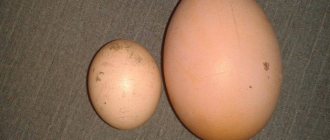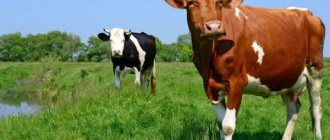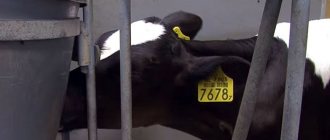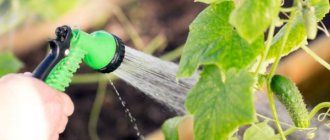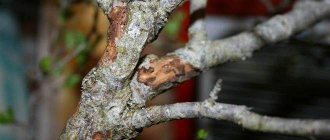If a chicken's crop has increased in size, most likely she has recently eaten well. This is a common occurrence and there is no need to worry. It's another matter if he is in this state for a long time. And the bird became lethargic and began to refuse water and food. These signs indicate problems with her health. The tips described below in the article will help you understand the reasons for this behavior of the chicken and provide first aid to it.
The structure of the goiter and its functions
Chicken crops are part of the digestive system. This is a special container for temporary accumulation and storage of feed. It is especially well developed in birds, whose main food is grain crops.
The crop is located at the base of the chicken's neck. It looks like a small protruding pouch, sharply limited above and below.
The word “goiter” comes from the Old Russian “zobati” or “goiter”, which means “swallow”, “peck”, “that with which food is taken.”
Chickens are missing teeth. Therefore, the glands located inside the crop help soften food with the help of a special secretion.
Two special sphincters restrict the entry and exit of food. And the goiter muscle walls contract and push food further. The softened food then enters the stomach for final digestion.
The role of crop in poultry digestion
The crop is the proventriculus, located immediately behind the beak cavity in chickens, turkeys, pigeons, and guinea fowl. Since the salivary glands of chickens are underdeveloped, wetting of the feed occurs in the crop. Here enzymes that ferment starch are active. Low molecular weight acids are formed that sanitize food and inhibit the development of opportunistic microbes.
The crop remains full while food is digested in the stomach. When the underlying organ empties, a portion of food comes from the reserve sac. In winter frosts, a bird with a full crop does not freeze, because a lot of heat is generated during slow digestion. That's why poultry farmers give their chickens grain at night.
What is goiter blockage
The chicken crop is clearly visible and palpable when it is full.
Its size and density depend on the volume or type of food eaten. Hard grains will remain in the crop sac much longer than soft and moist grains. As food is digested, the crop is released and becomes soft again.
If the chicken has a large crop, it may be blocked. This is a pathology in which there is an overload of feed masses. The chicken may eat again, but the food will not pass through. When palpated, it may seem like there is a lump of hard dough inside.
Crop blockage in chickens is not always visible if they have thick feathers around their necks. In this case, you should examine the birds in the morning, on an empty stomach.
If the goiter in chickens does not cope with its purpose, the reasons for its dysfunction should be identified.
Why can a goiter become clogged?
Eating disorder
The main reason for a clogged crop sac is unorganized feed supply. And first of all, too frequent feeding. Not having time to digest the previous volume, the chicken gorges itself again.
Long intervals between meals also negatively affect the functioning of the digestive system. The bird is starving. And when he receives food, he greedily pounces on it and eats without measure.
Water
It is necessary to monitor the cleanliness of the drinking bowl and its filling. Dirty water can cause digestive problems.
If chickens receive only dry feed, as well as additives in the form of salt, molasses, cake, the volume of water should be increased by 30%.
It is important to monitor the amount of fluid on hot days, when chickens may not receive enough of it.
Feed quality
Poor quality foods in the form of rotten grains or vegetables can cause blockage of the goiter sac.
You should also avoid food waste, green potatoes and tomatoes.
Too big pieces of food
In some cases, a chicken may swallow a whole stem or tough grass along with feed. In this case, stuck food can cause an increase in goiter.
Treatment
A clogged goiter can be cured not only with surgery. If you notice a deviation in the bird’s condition, you can help yourself at home. The first thing to do is to find out what caused the inflammation; this will determine what the treatment will be. For example, if a hard goiter is detected upon palpation, but the bird behaves normally, most likely there is no inflammation of the goiter - this is a temporary digestive disorder. In such cases, you need to put the chicken on a diet, feed it only soft food, and give it a lot to drink. The food can be boiled potatoes, boiled chicken eggs, boiled porridge and so on. In addition, you need to do a gentle massage of the goiter, which will help the food pass further down the esophagus.
If, in parallel with the modification of the goiter, the bird experiences discomfort, eats and drinks poorly, becomes lethargic, and does not lay eggs well, an inflammatory process in the goiter can be suspected. First you need to try the diet that was mentioned earlier. At the same time, it is necessary to give the chicken probiotics and drugs that will improve digestion. If this does not help, then the question of surgical intervention will arise: a veterinary surgeon cleans the digestive organ by making a small incision in the throat, which is then carefully sutured. After the procedure is completed, the chicken is transferred to a special diet, which will necessarily include probiotics to restore digestive function.
Symptoms
In order not to miss a blockage of the chicken's crop, you need to observe its behavior. Pathology manifests itself in the following signs:
- ball-shaped compaction regardless of feeding;
- prolonged lethargy of the bird;
- lack of appetite and thirst;
- the smell of rot from the beak;
- breathing problems;
- a colorless liquid is released from the beak;
- increase in temperature;
- bird death.
If the above symptoms are detected, you need to immediately begin treatment.
Find out how to measure a chicken's temperature in the article "About a Chicken's Body Temperature."
Let's figure out what to do if a chicken has a clogged crop.
Diagnostic methods
Crop blockage can be identified by the appearance of the chicken. If the bird's crop sac is constantly enlarged, regardless of food, this indicates a violation of its patency. It is easiest to identify the disorder in birds that do not have thick feathers in the neck area.
However, in some breeds you can see the crop swelling to impressive sizes. Breeds such as Pavlovskaya and Pervomaiskaya are distinguished by thick plumage in the collar area. Therefore, the disease cannot be detected at the initial stages.
To detect problems, it is worth paying attention to the behavior of birds. They become lethargic, lose their appetite, and do not drink water. Such symptoms should force the owner to pay attention to the condition of the goiter.
When blocked, the goiter sac acquires a hard consistency and resembles a dense ball. Little by little, the chicken develops respiratory problems. At the same time, the bird begins to breathe noisily and intermittently. When inflammation occurs, a clear liquid is released from the beak. It may also be yellowish. If you pick up a chicken with a clogged crop, you will be able to smell a sour, putrid smell from the beak. This indicates that the food that is stuck in the esophagus has begun to deteriorate.
How to get rid of the problem
Method 1
If a chicken has an enlarged crop, and is mobile, but does not eat anything, it means that she is overeating. In this case, you need to plant it separately and solder it with warm water.
It is important to monitor the chicken's nutrition. Feed only soft food: wet ground porridge, boiled mashed potatoes, small cottage cheese.
A couple of times a day, drop about 10 ml of vegetable oil mixed with fish oil into the beak.
Method 2
If a blockage of the goiter sac is detected in a timely manner, you can try to soften the food contained inside. To do this, you need a syringe (without a needle), vegetable oil and water at room temperature.
Procedure:
- Using a syringe, pour oil and water into the chicken's throat.
- Massage the hardened area.
- Turn the bird upside down.
- Pushing the lump to the throat.
- Shake gently occasionally.
To prevent the chicken from suffocating, it needs to be turned back every 10-15 seconds.
Method 3
If the softening method does not help, you can pour a weak solution of potassium permanganate into the bird’s throat.
To do this, you need a soft rubber tube, lubricated with Vaseline, or a syringe, a glass of warm diluted pink solution. The procedure is similar to method 2.
Independent operation
The surgical method is necessary when a foreign object is detected in the goiter sac. This should be done by a veterinarian or an experienced poultry farmer.
To perform the operation you need: an alcohol-containing product, sharp scissors treated in it, hydrogen peroxide, tweezers, cotton wool, iodine, surgical threads for sutures (if any).
Procedure:
- Secure the chicken and remove feathers from the crop area.
- Treat the opening site with iodine.
- Make a small incision and remove the contents with tweezers.
- Treat the cut with peroxide.
- Sew with absorbable thread.
For a chicken, the operation is almost painful, since the crop sac is a place with a low pain threshold.
Some chicken owners do not sew up the incision due to the lack of dissolving threads. After the operation, the chicken is kept on a starvation diet for a day, monitoring its condition.
If a bird has a fever, an antibiotic is injected. The names and doses are indicated in the article “What antibiotics are needed for chickens.”
First aid for a clogged goiter
If an enlarged goiter is detected, immediate measures must be taken, but which ones will have to be decided depending on the situation.
Method No. 1
You need to take a syringe and collect a few cubes of vegetable oil, and then pour it into the beak, after removing the needle. After the procedure, the bird is given a small, gentle massage. If the goiter has become clogged quite recently, then the food will safely become soft and pass into the stomach.
Method No. 2
In case of severe blockage, inflammatory processes are initially dealt with using a manganese solution. The liquid should be pale pink. Additionally, you will need an IV tube. Before starting the procedure, the tube must be lubricated with Vaseline and inserted into the esophagus. Next, pour in ½ cup of potassium permanganate solution. This rinsing should quickly relieve the chicken's condition.
To completely remove the contents in the goiter, rinsing is carried out several times, usually two times is enough. The manganese solution softens the food and washes it out. To speed up the process, after infusion, the hen is carefully picked up by the paws, turned over and shaken lightly.
Method No. 3
Dietary feeding, in this case the chicken should be placed in a separate room. During treatment, the following types of food are used:
- boiled, mashed potatoes;
- skim cheese;
- kefir with low fat content.
An additional necessary measure is to massage the goiter and take Baytril (an antibiotic).
Method No. 4
Surgical intervention is performed if there is severe blockage of the goiter. Here the bag is opened and the contents are excised. The veterinarian makes an incision in the skin and cleanses the organ of food. To prevent the occurrence of inflammatory processes, it is necessary to give the bird antibiotics for several days.
Goiter incision
Important to know! If you have the appropriate experience, you can perform the operation yourself. In all other cases, it is recommended to contact a qualified specialist. Some poultry keepers use long tweezers to extract the contents of the crop.
Prevention
So that you don’t have to think about what to do if a chicken’s crop is clogged, it is necessary to take preventive measures.
Chickens should be fed properly. It should happen at the same time with the same intervals. The diet should consist of dry and wet foods.
An important condition is the availability of clean water. To improve the digestive process, the drink is periodically diluted with a small amount of apple cider vinegar.
Shell rock or small stones are added to the food. They help grind food inside the crop.
Goiter inflammation
Causes and symptoms
If a chicken's crop becomes clogged, it may be inflamed due to candidiasis or thrush. This happens as a result of damage to the mucous membranes of the throat by the fungus Candida. It is transmitted through food, soil, and bedding.
Symptoms of the disease begin to appear 2 weeks after infection. Chickens become lethargic and inactive. Upon external examination of the goiter sac, compactions are observed that interfere with the swallowing of water and food.
Young birds are especially prone to inflammation of the goiter due to the immaturity of the body. Adults are less susceptible to the disease. But when infected, their temperature rises, their plumage is lost, and lameness appears.
An examination by a specialist and laboratory tests will help accurately diagnose the disease.
Therapy
It is recommended to treat chickens only at the initial stage of candidiasis. In cases of advanced thrush, birds should be killed and disposed of.
The sequence of treatment consists of daily emptying the goiter of fluid and food debris. To do this, the bird must be turned upside down. Feel the goiter and push out its contents with massage movements.
After the procedure, inject a 10% Baytril antibiotic solution into the bird’s throat according to the instructions.
A special diet will help restore the intestinal microflora of chickens. It consists of soft food and probiotics (A2, Zoonorm). The bird needs isolation, clean water, and periodic palpation of the crop sac.
For preventive purposes, it is recommended to periodically disinfect the poultry house. In winter, give chickens vitamins and monitor the correct diet.
What is candidiasis and how to fight it?
Often, after cleansing the goiter, candidiasis occurs - a fungal infection, which means that appropriate treatment will be needed. First of all, use an antibiotic solution to treat the pharynx. The liquid is pumped in using a syringe, without a needle, which is filled with an antifungal drug.
Read also: Cake without flour at home
This method has a big advantage over injections: during rinsing, the medicine will be where it is needed. It is recommended to use solutions at least twice a day. The most effective drug is Baytril (10%). The duration of treatment is at least 5 days.
At the same time, the laying hen is prescribed a diet that includes yoghurts that can restore the functionality of the crop and have a beneficial effect on the digestive system of the birds. This method is suitable for adult livestock and chickens. Habitual feed and mixed feed should be removed and soft food given instead. Additionally, you can include vegetable oil in your diet, which will facilitate the passage of food through the digestive system.
A gentle diet is prescribed for at least 30 days and can be extended if necessary. Complete recovery occurs when food stops stagnating in the goiter sac, and this organ, upon palpation, feels soft and pliable to the touch.
Drooping goiter
Main Factors
This condition is most often observed in old chickens due to constant stretching of muscle tissue.
With age, muscles cease to be elastic. An empty crop is in a relaxed state, becoming like a sagging bag. Often there is liquid or remains of softened food left there.
If the chicken suffered from infectious diseases or blockage of the goiter sac, then its sagging is a consequence of past pathologies.
Less commonly, sagging crops occur in chickens left without a broody hen. In this case, the owner incorrectly calculates the amount of food for the chicks, and they overeat.
Chickens should be supplemented with vitamins and minerals in their feed. They will help the muscles maintain elasticity. In particular, vitamin A is useful, improving the functioning of mucous membranes.
Atony
The extreme degree of sagging of the goiter sac is its complete atrophy or atony. The result of the disease is stagnation of food and fluid in the crop. And as a consequence - its rupture. In this case, the chicken may not react in any way to what happened.
Subsequently, the ruptured sac becomes a favorable environment for new infections and infections.
If the chicken is breeding or is of other value, an operation should be performed to return the crop to its normal state. In other cases, it is slaughtered.
The main causes of the problem
The crop becomes clogged in almost all types of chickens. However, the prevalence of the disease depends on the type of food the birds eat. If the owner feeds the chickens incorrectly, the likelihood of developing a disease is quite high. There are many reasons for the appearance of pathology.
The main provoking factors include the following:
- Dietary disorders. The most common cause of problems is dietary irregularities. It is recommended to feed chickens at a clearly designated time. Often, eating at different times of the day leads to significant intervals between meals. This negatively affects the digestive organs of birds. Hungry chickens may attack food and eat too much food. This provokes overflow of the goiter. If the chicken is healthy, the food will go straight into the stomach. In weakened or sick birds, food can accumulate in the crop, which provokes blockage and inflammation.
- Insufficient amount of water. Goiter dysfunction is caused by fluid deficiency. It is water that pushes food into the stomach, where it is digested. Therefore, it is important to control not only the timeliness of feeding, but also the regularity of water supply.
- Unsatisfactory quality of feed. The cause of blockage may be food containing large fragments. Sometimes chickens accidentally swallow large or tough stems and branches. In this case, the stems provoke blockage of the crop and can damage organs. In this situation, the owner is not always able to provide full assistance to the chickens. The problem can only be dealt with quickly. In this case, it is recommended to remove the stuck fragments.
- Lack of vitamins and minerals. The development of the disorder may be due to an insufficient amount of vitamins and other useful elements in the body of birds. The most common cause of problems is a deficiency of vitamins B2 and B12.
Goiter damage
Injuries and their consequences
There are cases when a chicken crop is injured from the inside or outside.
Internal damage occurs due to sharp or hard foreign objects entering the crop: large stones, grass, straw, glass fragments.
Often the cause of internal damage to the goiter sac is rotten grains.
It is impossible to detect an injury from the inside. It leads to food fermentation and the appearance of microcracks. They provoke an inflammatory process and deterioration of the bird’s condition.
External damage to the goiter is also unexpected and dangerous. If there is not enough space in the poultry house, chickens can peck at each other and attack each other aggressively. A through wound in the goiter can be formed due to a bite or impact on a sharp mesh. Subsequently, the food falls out of the wound. Inflammation begins, and then tissue decay.
